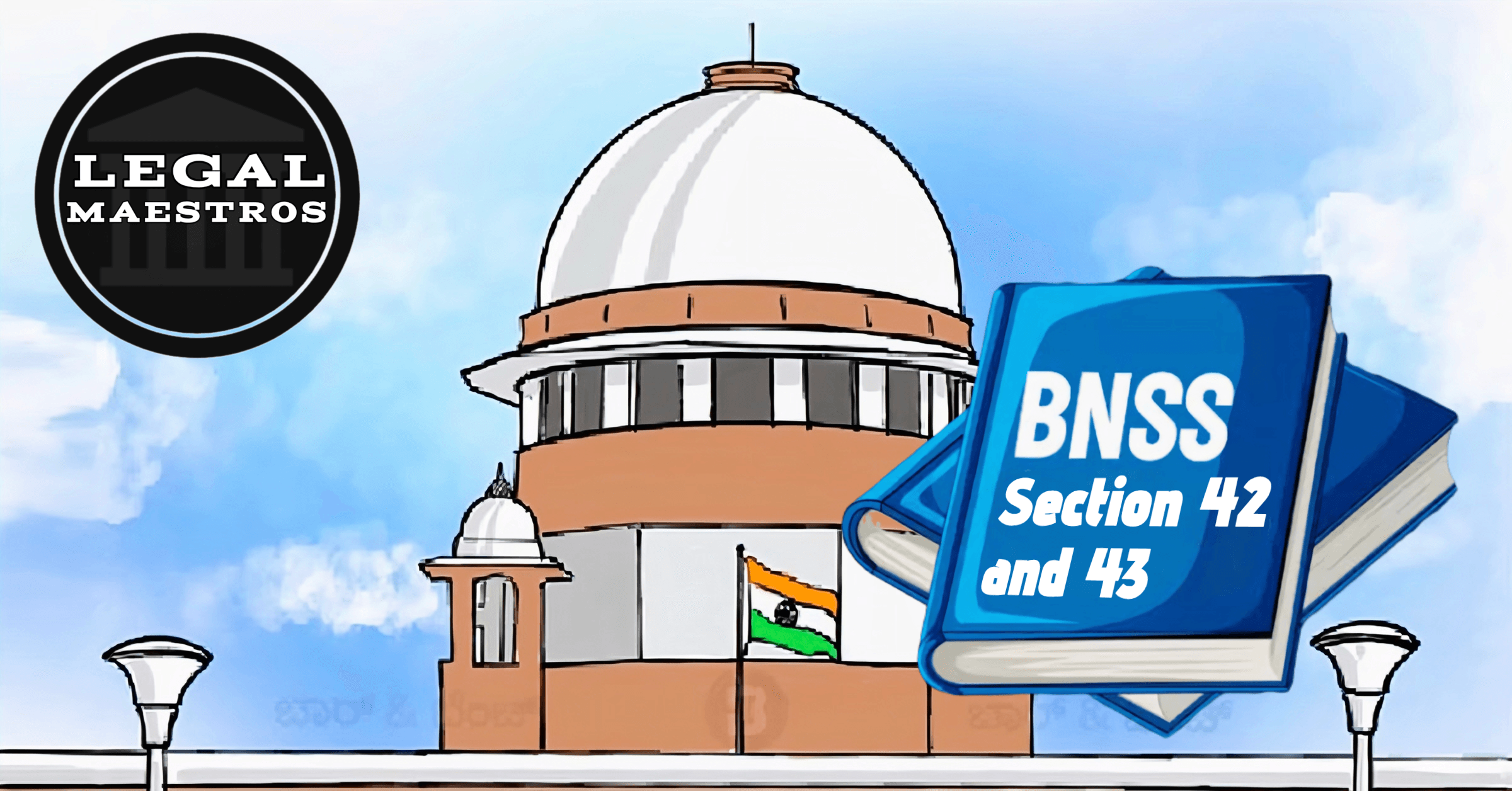
Section 42: Protection of Members of the Armed Forces from Arrest
In accordance with the Bharatiya Nagarik Suraksha Sanhita, 2023, members of the Armed Forces of the Union are afforded a level of protection that distinguishes them from other individuals. When these members are actually carrying out their official responsibilities, they are afforded this protection. In addition to ensuring that members of the Armed Forces are not subjected to unwarranted harassment or obstruction while performing their official duties, the law acknowledges the specific functions and obligations that are associated with the Armed Forces.
Consent of the Central Government is required in the first paragraph.
Unless the Central Government gives permission, this clause states that no member of the Armed Forces can be detained for any act done or even an act that appears to be done by him in the course of his official duties. This provision applies to any and all crimes committed by members of the Armed Forces. Despite the fact that the behavior in question may be contentious or may result in consequences, this rule is nonetheless applicable. The most important thing to keep in mind is that if the actions are connected to his official function, then his arrest cannot take place effortlessly.
An illustration of this would be a circumstance in which an army commander, while attempting to maintain order in a troubled area, accidentally fires upon a violent mob, causing damage to other people. There is a complaint lodged against him at a later time. In such a scenario, the police are required to first obtain the authorization of the Central Government before they are able to make an arrest of the official. This guarantees that the activities of the officer, which were a part of his duty, will not be subject to instant legal action without first being carefully reviewed by a higher authority.
For any queries or to publish an article or post or advertisement on our platform, do call at +91 6377460764 or email us at contact@legalmaestros.com.
This section guarantees that the discipline and morale of members of the Armed Forces are maintained, as well as serves to prevent the abuse of legal processes against those individuals.
Functions of the State Government, as outlined in Subsection (2)
Certain categories of state troops are afforded a comparable level of protection by subsection (2), but this protection is exercised under the command of the state government. The State Government has the authority to decide whether or not to apply the provisions of subsection (1) to particular classes or categories of the force that is responsible for keeping public order by means of a public notification of the matter.
In the event that such a notification is issued, the rules will be implemented as if the phrase “Central Government” were substituted with “State Government.” This indicates that the consent that is necessary for arrest would then have to come from the State Government rather than the Central Government.
For any queries or to publish an article or post or advertisement on our platform, do call at +91 6377460764 or email us at contact@legalmaestros.com.
Let us take into consideration a hypothetical situation in which a Rapid Action Force unit of a state police force is sent to control a conflict amongst members of the same community. If an officer from such force takes a forceful action and someone files a complaint, the police will not be able to arrest him until the State Government gives permission to do so. This is provided that this unit has been granted protection through a notification from the state.
Furthermore, this article recognizes that certain forces, which are not a member of the Armed Forces of the Union, are also responsible for performing sensitive and high-risk missions in the context of maintaining law and order. Consequently, it grants state governments the ability to protect these personnel from being arrested without just cause.
Section 43: Arrest—How It Is Made
The specific steps that must be taken in order to make an arrest are outlined in Section 43 of the Bharatiya Nagarik Suraksha Sanhita, which was published in 2023. This encompasses the use of physical force, the application of force, particular considerations for women, and the limitations placed on the authority of the police.
For any queries or to publish an article or post or advertisement on our platform, do call at +91 6377460764 or email us at contact@legalmaestros.com.
(1) The manner in which the arrest was made
The act of physically touching or restraining the body of the person who is about to be arrested is typically required in order to complete an arrest. In contrast, if the individual freely submits to the custody of the authorities, either verbally or physically, then it is possible that actual physical contact is not required.
When a woman gets arrested, the law is more sensitive than it is when it comes to men. If a woman is notified verbally that she is being arrested and she gives her consent to the arrest, then it will be presumed that she has consented to the arrest, unless there is something unique about the situation. When a woman is being arrested, a male officer should avoid touching her in the majority of situations. When it comes to physically arresting a woman, only a female officer is permitted to do so, unless the circumstances really warrant something different.
A woman who is detained is required to immediately inform her relatives, friends, or any other person she designates about the arrest and the location where she is being held. This is a requirement that the police must fulfill.
For any queries or to publish an article or post or advertisement on our platform, do call at +91 6377460764 or email us at contact@legalmaestros.com.
Exemplification: If a woman is accused of stealing and a male police officer informs her that she is under arrest, and she agrees and cooperates with the officer, then the officer does not have to touch the lady. In order for her sister to be notified, the officer is required to make contact with the sister and provide her with information regarding the location of the detention.
The Use of Force in Cases Where It Is Necessary, Section 2
Whenever the person being arrested makes an attempt to flee or puts up resistance to the arrest, the law enforcement officer or the individual who is performing the arrest has the authority to employ any and all methods required to ensure that the arrest is effective. The application of force, on the other hand, ought to be appropriate and proportional to the opposition that is being offered.
As an illustration, if a suspect is attempting to evade being arrested by jumping out of a window, the officer has the ability to physically grasp or tackle him in order to stop him from doing so, provided that the force used is not excessive beyond what is required to maintain control of the situation.
For any queries or to publish an article or post or advertisement on our platform, do call at +91 6377460764 or email us at contact@legalmaestros.com.
Use of Handcuffs for the Purpose of Section 3
In certain circumstances and depending on the gravity of the offense, the law permits the use of handcuffs; nevertheless, usage of these devices is restricted. There are instances in which the individual is:
A person who commits crimes on a regular basis or repeatedly
Someone who has evaded capture or being held captive
A person who is accused of committing crimes such as organized crime, terrorism, drug trafficking, illegal possession of arms, murder, rape, acid attack, counterfeiting of currency, human trafficking, sexual crimes against children, offenses that threaten the security of the state, or big economic crimes.
For any queries or to publish an article or post or advertisement on our platform, do call at +91 6377460764 or email us at contact@legalmaestros.com.
It is because of this rule that handcuffs are only placed on those who are accused of committing significant or dangerous crimes, and not on anyone else who is apprehended.
Consider the following scenario: a man who is accused of counterfeiting bank notes, has a history of criminal activity, and has previously evaded capture by law enforcement may be placed in handcuffs during the process of his arrest. On the other hand, a person who is accused of committing a petty theft for the first time should not be handcuffed without a good reason.
Prohibition of the Execution of a Person by Authority of the Police
It is made abundantly plain in this section that no law enforcement personnel has the authority to cause the death of a person while they are being arrested, unless the individual in question is accused of committing a crime that carries a sentence of death or life imprisonment. This is a crucial measure to prevent police misconduct and brutality in the custody of detainees.
For any queries or to publish an article or post or advertisement on our platform, do call at +91 6377460764 or email us at contact@legalmaestros.com.
Because stealing is not a crime that can result in the death penalty or life in prison, a police officer is not allowed to fire or otherwise use lethal force against a person who is attempting to flee from the police with the intention of committing the crime. In the event that a terrorist is apprehended during a confrontation, on the other hand, the use of lethal force might be considered ethically acceptable.
The arrest of women after sunset is covered in subsection (5).
A sub-section that safeguards the safety and dignity of women is included here. In it, it is stated that women should not be detained after sunset or before sunrise, with the exception of certain extreme circumstances. A female law enforcement officer is required to submit a written report and obtain prior authorization from a Judicial Magistrate of the First Class in the event that it becomes absolutely essential to make an arrest of a female within that time period.
This protects against the misuse of police power during odd hours and guarantees that judicial monitoring is maintained in circumstances that are particularly sensitive.
For any queries or to publish an article or post or advertisement on our platform, do call at +91 6377460764 or email us at contact@legalmaestros.com.
As an illustration, if the police receive a tip at midnight about a woman who is involved in human trafficking, they are unable to just arrest her during the night. The female law enforcement officer is required to provide a written explanation of the urgency of the situation and obtain clearance from a court before making the arrest.

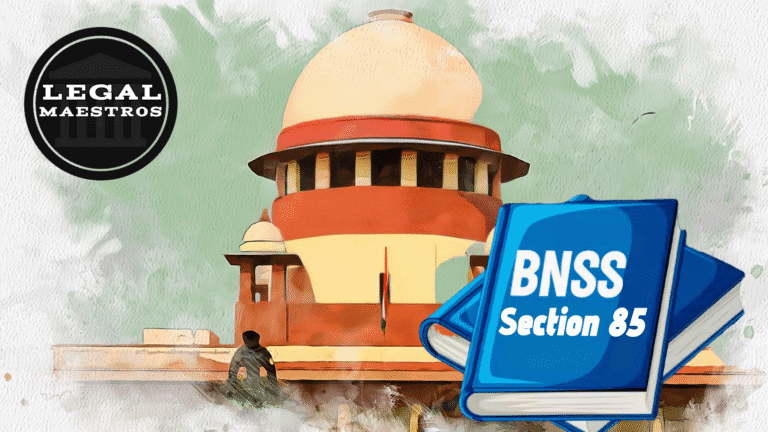
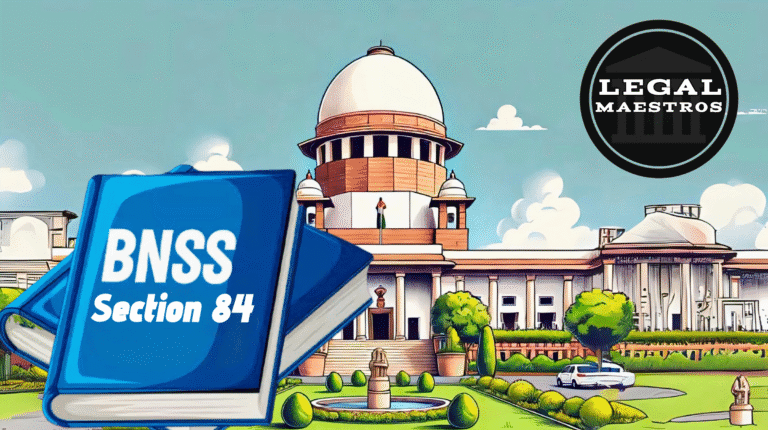
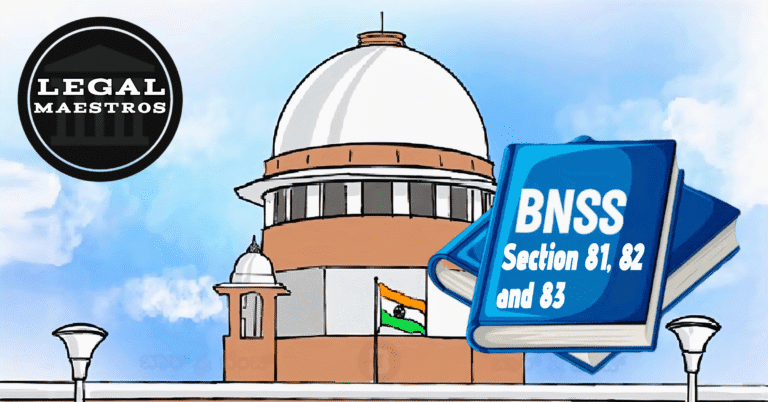
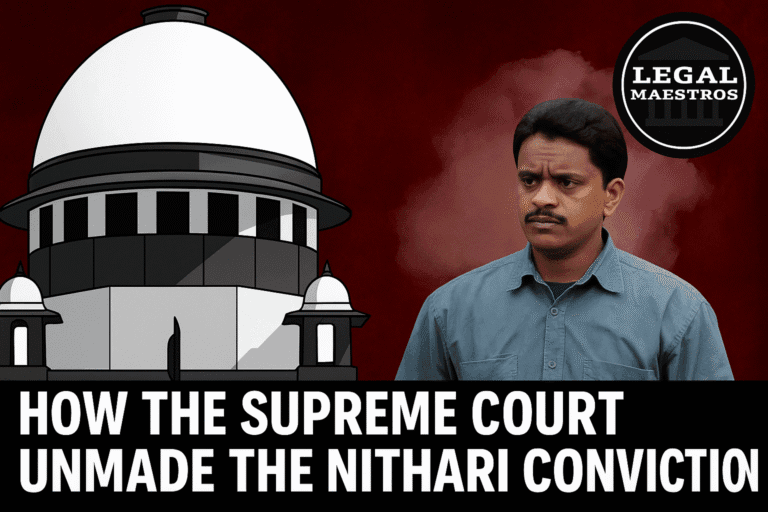

![Research Assistantship @ Sahibnoor Singh Sindhu, [Remote; Stipend of Rs. 7.5k; Dec 2025 & Jan 2026]: Apply by Nov 14, 2025!](https://legalmaestros.com/wp-content/uploads/2025/11/Gemini_Generated_Image_s0k4u6s0k4u6s0k4-768x707.png)
![Karanjawala & Co Hiring Freshers for Legal Counsel [Immediate Joining; Full Time Position in Delhi]: Apply Now!](https://legalmaestros.com/wp-content/uploads/2025/11/Gemini_Generated_Image_52f8mg52f8mg52f8-768x711.png)
1 thought on “Section 42 & 43, Bharatiya Nagarik Suraksha Sanhita, 2023: Protection of Armed Forces and State Forces from Arrest”